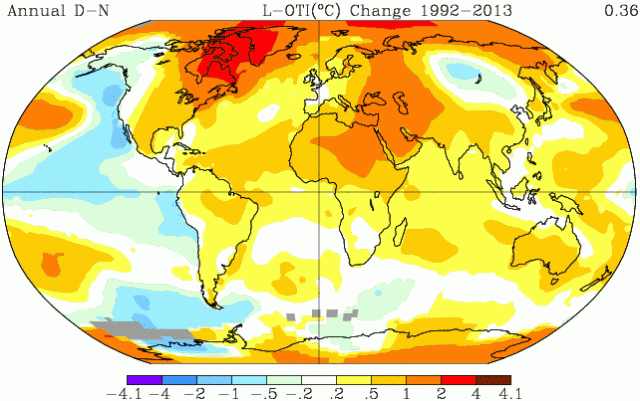Pacific winds have blown in recent run of La Niñas
Ars Technica » Scientific Method 2014-02-24

Currently, the average global surface air temperature isn't rising as fast as it did in the '80s and '90s. Understanding why requires reminding yourself that at least 90 percent of the energy added to the climate system by human activity over the years has gone into the ocean rather than the atmosphere. Earth’s oceans are vast, and changes in the distribution of warm water at their surface can drive atmospheric temperatures.
The past 15 years or so have been ruled by La Niña conditions, where there's an upwelling of deep, cold water in the Eastern Pacific, which lowers the average temperature of the globe. Previous research has shown that accounting for this run of La Niñas can explain the slowdown of atmospheric warming, which seems to be accompanied by increased warming below the ocean’s surface.
But what has been driving these La Niñas? Whether La Niña or El Niño conditions prevail in a given year depends on the whims of the tropical winds. Stronger winds blow warm surface water in the equatorial Pacific westward, bringing up deep water to replace it. Weaker winds leave the surface layer of warm water intact, keeping a lid on the upwelling.
Read 12 remaining paragraphs | Comments